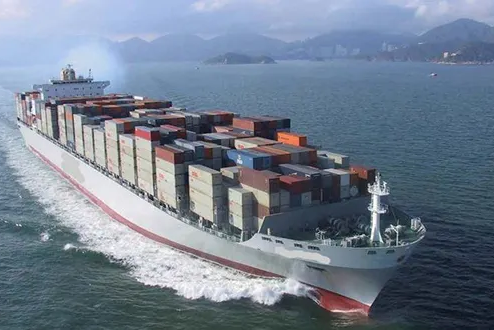Контейнерные перевозки являются основой мировой торговли, обеспечивая эффективное и безопасное перемещение товаров по всему миру. С постоянно растущим спросом на международную торговлю, предприятиям необходимо понимать особенности контейнерных перевозок для оптимизации своих логистических операций. В этой статье рассматриваются лучшие практики и ключевые аспекты для максимизации эффективности в контейнерных перевозках.
Понимание контейнерных перевозок
Контейнерные перевозки включают транспортировку товаров в больших, стандартизированных контейнерах. Эти контейнеры бывают разных размеров, самыми распространенными являются контейнеры длиной 20 и 40 футов. Стандартизация позволяет осуществлять бесшовный перенос между судами, грузовиками и поездами, делая этот способ транспортировки универсальным и эффективным.
Основные преимущества контейнерных перевозок
Эффективность: Контейнеры разработаны для легкой обработки и укладки, что ускоряет процесс погрузки и выгрузки в портах. Эта эффективность приводит к более быстрым срокам транзита и снижению затрат.
Безопасность: Товары, перевозимые в контейнерах, менее подвержены повреждениям и кражам. Прочное строение контейнеров обеспечивает отличную защиту от внешних воздействий и возможного хищения.
Экономичность: Контейнерные перевозки, как правило, более экономически выгодны, чем другие виды транспортировки, особенно для международных перевозок на дальние расстояния. Возможность консолидации нескольких грузов в один контейнер еще больше снижает затраты.
Гибкость: Контейнеры могут перевозить широкий ассортимент товаров, от сырья и машин до скоропортящихся товаров и готовой продукции. Специализированные контейнеры, такие как рефрижераторные (рефы), удовлетворяют специфические потребности, например, контроль температуры.
Лучшие практики грузоперевозок в контейнерах
Выберите правильный тип контейнера
Выбор подходящего типа контейнера критически важен для обеспечения безопасной и эффективной транспортировки грузов. Стандартные сухогрузные контейнеры подходят для большинства видов грузов, но компании должны учитывать специализированные контейнеры для специфических нужд:
Рефрижераторные контейнеры (Рефы): Для скоропортящихся товаров, требующих контроля температуры.
Контейнеры с открытой крышей: Для крупногабаритного груза, который не помещается в стандартный контейнер.
Контейнеры на плоской раме: Для тяжелых и громоздких предметов, таких как машины и автомобили.
Оптимизация использования контейнеров
Максимальное использование доступного пространства внутри контейнера может значительно снизить затраты на доставку. Компании должны:
Правильная упаковка и стacking товаров: Убедитесь, что товары плотно и надежно упакованы, чтобы предотвратить смещение во время транспортировки.
Использование паллет и поддонов: Обеспечивает легкую обработку и эффективное использование пространства.
Сбалансированное распределение веса: Равномерно распределите вес, чтобы обеспечить устойчивость и предотвратить повреждения.
Внедрение продвинутых систем отслеживания
Реальное отслеживание и мониторинг грузов предоставляет ценные данные и увеличивает прозрачность на всем протяжении процесса доставки. Продвинутые системы отслеживания предлагают:
Обновления местоположения в реальном времени: Держат компании в курсе местоположения и состояния их грузов.
Мониторинг условий: Обеспечьте, чтобы температурозависимые товары оставались в необходимом диапазоне.
Прогностический анализ: Предугадывайте возможные задержки и оптимизируйте маршруты для более быстрой доставки.
Обеспечьте соблюдение регулирования
Соблюдение международных правил перевозок необходимо для избежания задержек и штрафов. Компании должны:
Оставайтесь в курсе торговых регламентов: следите за актуальными законами об импорте/экспорте и требованиями таможни для каждой страны назначения.
Подготовьте точную документацию: убедитесь, что все необходимые документы, такие как коносаменты, сертификаты происхождения и таможенные декларации, правильно заполнены и поданы вовремя.
Работайте с опытными таможенными брокерами: обеспечьте беспрепятственную таможенную очистку и минимизируйте риск проблем с соблюдением норм.
Используйте технологии для повышения эффективности
Технологии играют ключевую роль в оптимизации операций контейнерных перевозок. Предприятиям следует внедрять:
Программное обеспечение для управления перевозками: автоматизируйте процессы бронирования, документооборота и отслеживания.
Автоматизированные системы обработки грузов: ускорьте погрузочно-разгрузочные работы в портах.
Технология блокчейн: повысьте прозрачность и безопасность цепочки поставок благодаря неизменяемой записи транзакций и перемещений.
Ключевые аспекты контейнерных перевозок
Управление затратами
Стоимость доставки может значительно повлиять на чистую прибыль бизнеса. Ключевые стратегии управления затратами включают:
Консолидация грузов: Объединяйте несколько отправок в один контейнер, чтобы воспользоваться эффектом масштаба.
Ведение переговоров по контрактам: Получайте выгодные тарифы и условия с судоходными компаниями и экспедиторами.
Оптимизация маршрутов: Выбирайте наиболее эффективные и экономически выгодные маршруты для минимизации времени транзита и снижения потребления топлива.
Управление рисками
Управление рисками, связанными с контейнерными перевозками, является важным для обеспечения безопасной и своевременной доставки товаров. Рассмотрите следующее:
Страховое покрытие: Защитите себя от возможных
потерь из-за повреждений, краж или задержек.
Планирование на случай чрезвычайных ситуаций: Разработайте планы для решения неожиданных нарушений, таких как забастовки портовых работников или стихийные бедствия.
Регулярные аудиты: Проводите аудиты процессов доставки и партнеров для выявления и уменьшения рисков.
Практики устойчивого развития
Устойчивое развитие становится все более важным в глобальной логистике. Предприятия могут внедрить экологичные практики, такие как:
Использование топливоэффективных судов: Предпочтите судоходные линии, использующие современные, топливоэффективные суда для снижения выбросов углерода.
Внедрение экологичных упаковочных решений: Используйте перерабатываемые и биоразлагаемые материалы для упаковки, чтобы минимизировать воздействие на окружающую среду.
Компенсация выбросов углерода: Участвуйте в программах по компенсации углеродного следа для нейтрализации экологического воздействия грузовых перевозок.
Заключение
Контейнерные перевозки являются важной составляющей международной торговли, обеспечивая эффективность, безопасность и экономичность. Внедряя лучшие практики, такие как выбор правильного типа контейнера, оптимизация использования контейнеров, использование передовых систем отслеживания, обеспечение соблюдения регулирующих требований и принятие технологий, компании могут максимизировать преимущества контейнерных перевозок. Кроме того, управление затратами, смягчение рисков и внедрение устойчивых практик критически важны для поддержания конкурентоспособности на глобальном рынке.







































